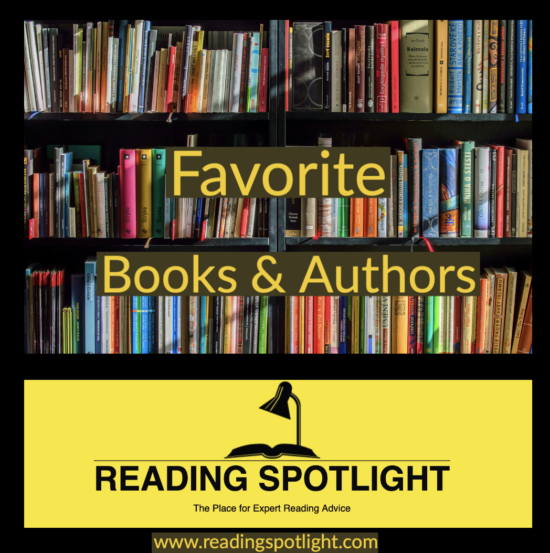Let’s put the Reading Spotlight on some of our favorite books and authors.
Reading aloud to or with children promotes a love of reading. It also provides the best model of reading skills for children–YOU!
Are you looking for a good book to buy as a gift or to read with a child? Keep these Book Lists accessible on your cell phone, and you’ll be ready at a moment’s notice when looking for a good book for children.
Reading Spotlight highly recommends the booklists on the websites of the National Education Association (NEA) and the American Library Association (ALA).
Remember that age and interest appropriate levels are not always the actual reading levels that a child has achieved. Many books, especially picture books, are written at high reading levels, and are meant to be read TO children by adults.
Use our QRLE (Quick Reading Level Evaluation) in our Free Tips: Choosing Books To Read For Pleasure to decide if your child can read a book alone, with help, or if s/he must have it read to him.
The Level It App is also available in the Apple Music store, but remember, the children’s book librarian of your public library, when told of your child’s interests and reading concerns, is an excellent and free guide for book selection. For a collection of all the benefits of using a free library, see Reading Spotlight’s Blog Post:
Summer Reading: What’s Hot? What’s Cool?
When reading aloud, get comfortable and hold the book so that s/he can see the pictures and words. For a preschool child, trace under the words so that the child will get used to seeing words in a left to right progression. This makes for automatic eye fixations which will help reading rate later.
Read aloud with good phrasing and expression. Model the reading and thinking skills needed to understand and enjoy the text. Wonder, laugh, or question at appropriate times. Check out Reading Spotlight free tip on
How to Read a Story With Your Child
Be enthusiastic! With children, enthusiasm is contagious.
The following lists include Reading Spotlight’s favorite all-time books to read aloud with children. We hope you will check some of them out of your local library, or consider buying them as gifts.
READING SPOTLIGHT’S FAVORITE POETRY
Most poetry for children has both rhythm and rhyme. This often helps to foster many reading skills from decoding words with word families to phrasing, rate, and expression. Poems are also short enough to include in regular reading time on hectic evenings. A few poems on these nights are the perfect read-aloud for busy parents.
Poems of Interest for Ages 3- 6 (not necessarily reading level)
Anna Banana—100 Jump Rope Rhymes—Joanna Cole
Five Little Monkeys Jumping on the Bed—Eileen Christlow
I’m Nobody! Who Are You? (Poems of Emily Dickinson for Young People)
Six Sick Sheep (tongue twisters)—Joanna Cole
Mother Goose–Tomie dePaola
Poems of Interest for Ages 7-10 (not necessarily reading level)
Adventures of Isabel—James Marshall
Hiawatha—Longfellow, illustrated by Rand
Paul Revere—Longfellow, illustrated by Jeffers
Jack Prelutsky—all poem books
Rattlebone Rock—Silvia Andrews
Saturday Night at the Dinosaur Stomp—Carol Diggory Sheilds
Scary Poems for Rotten Kids—Sean Ohuigin
Shel Silverstein—all poem books
Stopping By the Woods on a Snowy Evening—Robert Frost, illustrated by Jeffers
READING SPOTLIGHT’S FAVORITE BOOKS AND AUTHORS
Interest-appropriate for Ages 2-4 (Not necessarily reading level)
Jan Brett (all books)
Eric Carle (all books)
Tommy dePaola
Ezra Jack Keats (all books)
Bill Martin, Jr. (all books)
Mercer Mayer (all books)
Anna McQuinn (all books)
Laura Joffe Numeroff (all books)
Herman Parish (all books)
Richard Scarry (all books)
Maurice Sendak
Dr. Seuss (all books)
William Steig
Jane Yolen
Leo the Late Bloomer–Robert Kraus
The Little Engine That Could–Wally Piper
Alphabet Books for Ages 3-6
Alphabet City—Stephen T. Johnson
Butterfly Alphabet—Kjell B. Sandveel
Look Once, Look Twice—Janet Marshall
Z was Zapped—Chris Van Allsburg
Interest Appropriate for Ages 5-7
Norman Bridwell
Jeff Brown
Judy Blume
Monroe Leaf
National Geographic Kids
Mary Pope Osborne
Barbara Park
Margaret Ray
Marjorie Weinmann Sharmat
Silly Willy
Shel Silverstein
William Steig
Judith Viorst
Gertrude Chandler Warner
Easy Readers
Phonics Beginning Readers —Cynthia Amarosso
I Can Read Books
Biscuit Books –-Alyssa Satin Capucilli
Fancy Nancy Books–-Jane O’Connor
Fly Guy Books–– Tedd Arnold
Henry and Mudge Books–Cynthia Rylant
Lego Readers
Non-fiction Books
Kingfisher Readers
We Both Read
Interest –appropriate for Ages 7-9 (Not necessarily reading level)
Alexander and the Terrible, Horrible, No Good, Very Bad Day—Judith Viorst
Amazing Grace—Mary Hoffman
Could Be Worse—James Stevenson
Dork Diaries–Rachel Renee Russell
Dumb Bunnies—Sue Denim
Fables—Arnold Lobel
Ghost-Eye Tree—Martin and Archambault, illustrated by Rand
Happy Birthday, Martin Luther King—Marzollo, illustrated by Pinkney
If I Were in Charge of the World—Judith Viorst
Miss Nelson books—Harry Allard
Night Tree—Eve Bunting
North Country Night—David Sans Soucci
Paper Bag Princess—Robert Munsch
Quick as a Cricket—Audrey Wood
Round Trip—Ann Jonas
The Cut-Ups—James Marshall
The King Who Rained—Fred Gwynne
The Stupids—Harry Allard
The Trek—Ann Jonas
The True Story of the Three Little Pigs—Jon Scieszka
Thirteen Days of Halloween—Carol Greene
What’s Under My Bed?—James Stevenson
Wimpy Kid books–Jeff Kinney
Interest-appropriate for Ages 10-12 (Not necessarily reading level)
Charoltte’s Web—E.B. White
Holes—Louis Sachar
How to Eat Fried Worms—Thomas Rockwell
J.T.—Jane Wagner
Little House on the Prairie—Laura Ingalls Wilder
Sarah, Plain and Tall—Patricia MacLachlan
The Boxcar Children—Gertrude Warner
The Trumpet of the Swan—E.B. White
Wilma Unlimited—Kathleen Krull
Rick Riordan (Books about demi-gods, heroes, magic and monsters)
These books are so much better than the movies made of them! Try reading them, even if your child has seen the movies. When you finish the book, ask for specific differences between the book and movie–it is a good lesson in comparison/contrast–an important reading skill.
Be sure to check out Reading Spotlight’s Pinterest Board: Encouraging Lifelong Readers.
© Reading Spotlight 2021


